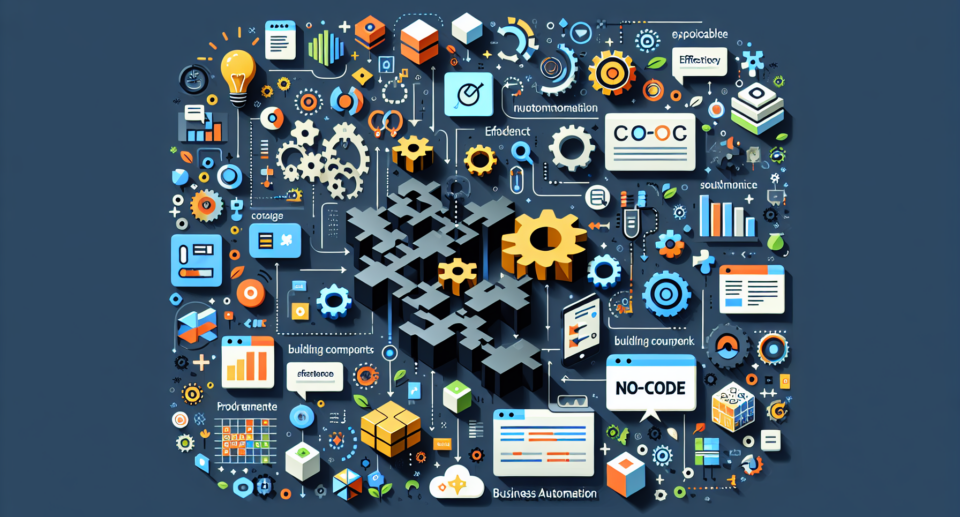Exploring No-Code Solutions for Streamlining Business Automation

In today’s rapidly evolving business landscape, companies are continuously seeking ways to streamline operations and stay ahead of the competition. One of the most effective methods for achieving this is through automation. Traditionally, implementing automation required extensive coding knowledge and significant investments in software development resources. However, the advent of no-code solutions has democratized access to automation tools, allowing even those without technical expertise to build and deploy efficient automated workflows.
The Rise of No-Code Platforms
No-code platforms have emerged as game-changers in the world of business automation. These tools provide intuitive interfaces that allow users to create complex workflows and applications with simple drag-and-drop actions. By eliminating the need for coding, businesses can save on development costs and reduce the time required to bring their automation strategies to life.
One of the most significant benefits of no-code solutions is their accessibility. Employees from various departments, including marketing, sales, finance, and HR, can now contribute to automation efforts without relying on IT teams. This democratization of technology fosters innovation and encourages cross-functional collaboration, ultimately driving business growth.
Key Features of No-Code Automation Tools
No-code platforms come equipped with a plethora of features designed to streamline business processes. Some of the key functionalities include:
1. Workflow Automation: Users can create automated workflows to handle repetitive tasks, such as data entry, customer support inquiries, and document approvals. These workflows can be tailored to meet specific business requirements, ensuring that processes run smoothly and efficiently.
2. Integration Capabilities: No-code platforms often offer seamless integration with popular third-party applications, allowing businesses to connect their existing tools and systems. This integration ensures that data flows seamlessly between different applications, reducing manual effort and minimizing errors.
3. Customizable Templates: Many no-code platforms provide pre-built templates for common business processes, such as lead management, project tracking, and invoicing. These templates can be customized to fit unique business needs, enabling rapid deployment of automated solutions.
4. Real-Time Analytics: To drive continuous improvement, businesses need insights into the performance of their automated workflows. No-code platforms typically include real-time analytics and reporting features, allowing users to monitor key metrics, identify bottlenecks, and optimize processes.
Use Cases for No-Code Automation
The versatility of no-code platforms makes them suitable for a wide range of business automation use cases, including:
1. Marketing Automation: Automating marketing campaigns, lead nurturing, and social media scheduling can help businesses reach their target audience more effectively and generate higher ROI.
2. Sales Automation: Streamlining sales processes, such as lead qualification, follow-up emails, and pipeline management, allows sales teams to focus on closing deals and building relationships with clients.
3. HR Automation: Automating HR tasks, such as employee onboarding, performance evaluations, and leave management, can enhance the overall employee experience and improve organizational efficiency.
4. Financial Automation: Automating financial processes, such as invoicing, expense tracking, and payroll management, reduces manual effort and ensures accuracy in financial operations.
Conclusion: Embracing the Future of Business Automation
No-code solutions are transforming the way businesses approach automation. By providing intuitive tools that empower users across the organization, these platforms enable companies to innovate faster, reduce costs, and enhance operational efficiency. As no-code technology continues to evolve, we can expect even more advanced features and integrations that will further revolutionize business automation.
